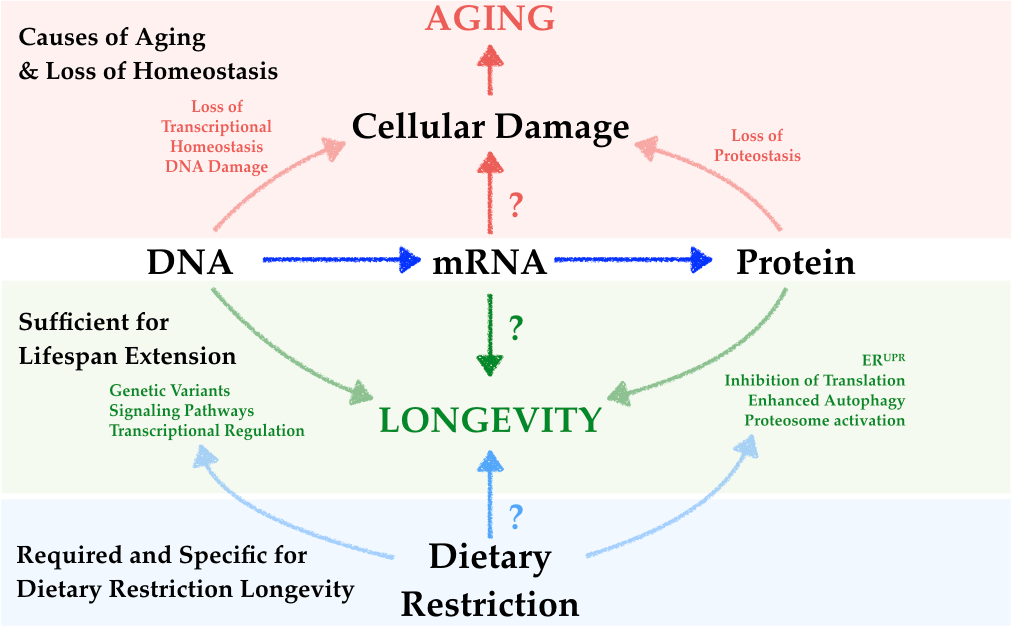Aging results from a decreased capacity to maintain cellular homeostasis with age, leading to increased risk for a plethora of chronic conditions. At its most basic level, cellular homeostasis is maintained via fidelity of the central dogma: DNA>RNA>Protein, e.g. the ability to correctly convert the information encoded in our genomes into the proteins and enzymes required for correct cellular function. One of the surprises of the human genome project was that, despite the complexity of our cells and tissues, we only have around 20 thousand protein encoding genes. A key mechanisms that generates the complexity of our ‘proteome’ (the variety of proteins in our cells) is a process called ‘Alternative RNA Splicing’, which is a key step in the central dogma that can generate many alternative proteins from one gene. These variants can have different roles in different cell types. Although such a system gives us complexity not seen in simpler organisms such as bacteria, it is also vulnerable to age-related dysfunction. We study how dysfunction of the RNA processing machinery can drive the aging process, and how mechanisms such as dietary restriction that can slow aging do so in part by maintaining splicing fidelity.

- Splicing Factor 1 Modulates Dietary Restriction and TORC1 Pathway Longevity in C. elegans.
Heintz C, Doktor TK, Lanjuin A, Escoubas CC, Zhang Y, Weir HJ, Dutta S, Silva-García CG, Bruun GH, Morantte I, Hoxhaj G, Manning BD, Andresen BS and Mair WB.
Nature. 2017 Jan 5;541(7635):102-106. doi: 10.1038/nature20789. Advance online Dec 5 2016.



